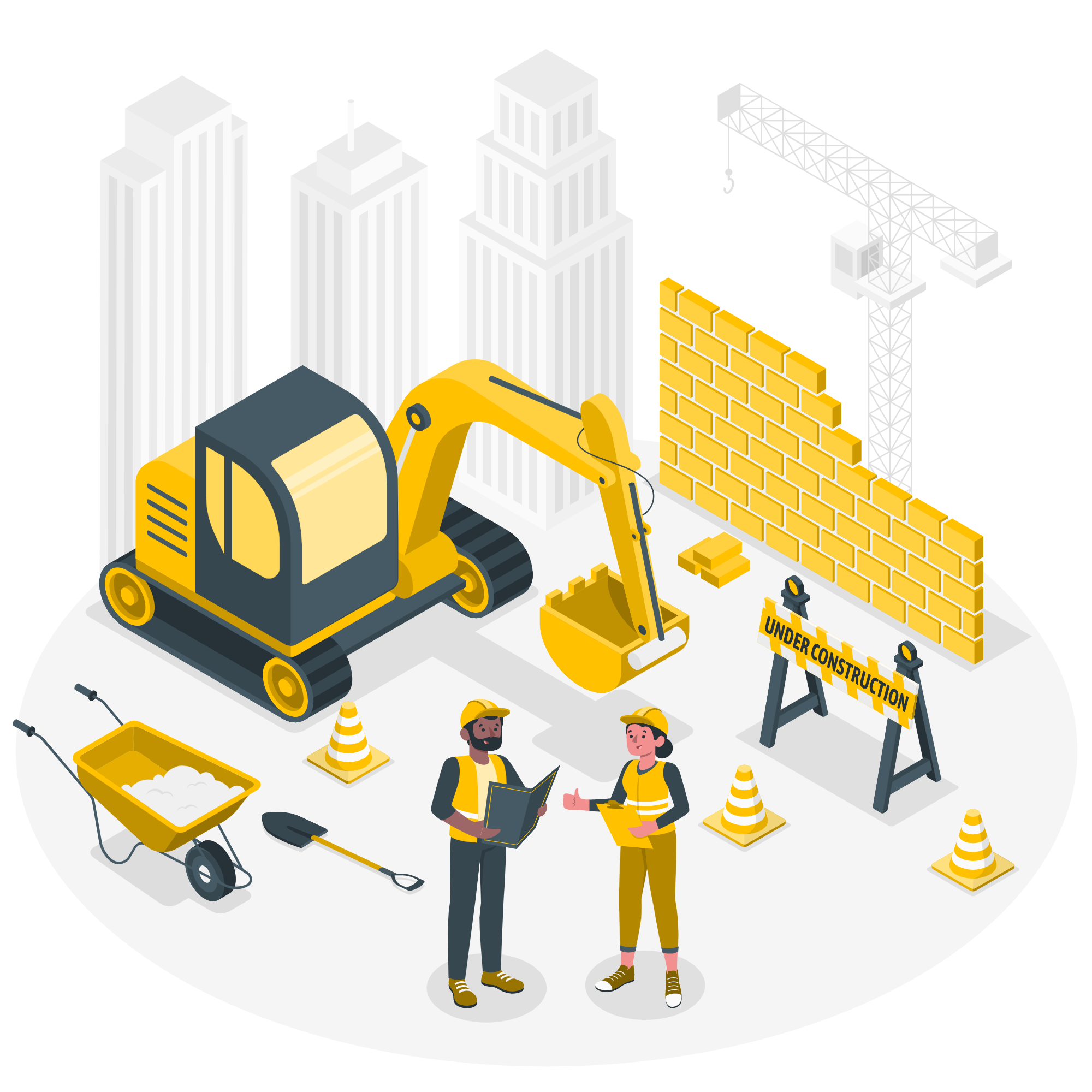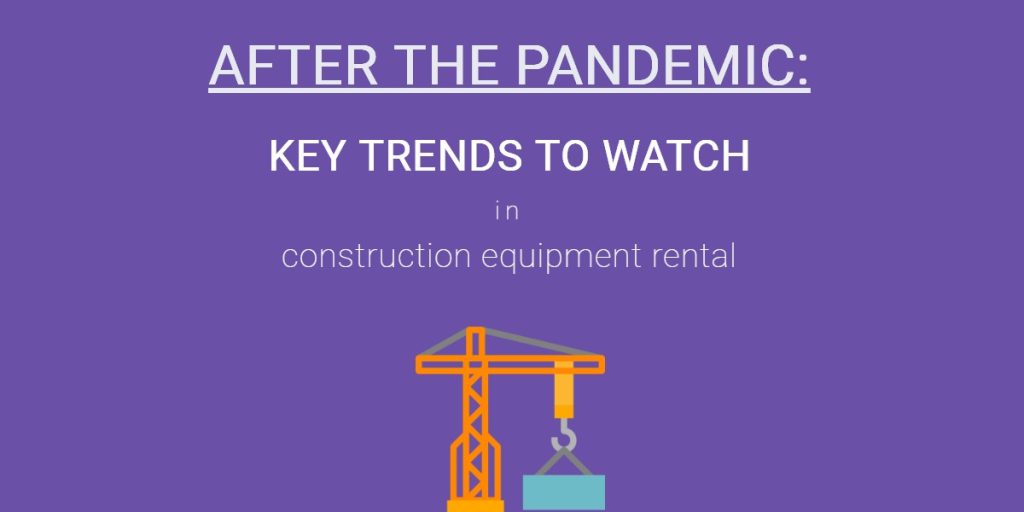As of July 20th, the US has entered its fourth phase of reopening amidst COVID-19 lockdowns. The extent of relaxing the lockdown and reopening the economy varies widely across different states, counties, and even cities. Businesses that operate indoors are more hard-hit than ones that lend themselves more to social distancing. The construction industry is among those that are steadily opening up with work resuming at sites across the country.
Many states including Kentucky, Ohio, Maryland, Massachusetts, and New York have either reopened or are in the process of reopening the construction industry. While nonessential construction projects are still on hold, all essential ones, such as bridges, hospitals, affordable housing, and homeless shelters, are ready to start again.
However, the cranes and forklifts are not simply rolling back onto the streets without some extra precautions to curb the spread of the virus. Apart from the usual precautions, handwashing stations are being added to construction sites and all tools are reportedly being sanitized when not in use. For at least some time now, this is what the future is going to look like, whether you’re in construction equipment rental or deal directly with the masons.
If the pandemic continues, this future will likely include more measures that limit in-person interactions. We can expect increased digitization so paperwork is eliminated or reduced, AR/VR use for training, and more semi-autonomous equipment so a minimal number of employees have to come in and interact with the same machinery.
Let’s further explore what to expect from the future of construction equipment rental given today’s changing landscape.
1. Complete digitization

Previously, everything was heavily reliant on paper at a lot of construction equipment rental companies. Over the years, this has changed as more and more companies are shifting to equipment rental software instead. However, a number of tasks are still done on paper, such as creating checklists to hand out to maintenance workers.
However, it is a well-established fact that the exchange of items, even paper, can possibly transmit the virus. As a result, we can expect companies to shift towards digitization and conduct more tasks online. By digitization, we don’t just mean bringing all your records online, we also mean bringing all your sales and operations online as well.
For example, you can implement e-commerce for your company, which gives your sales reps more time to focus on customer relationships instead of having to process orders.
You can also digitize your customer database by introducing equipment rental software that helps keep track of all customer information. You can run reports to figure out what types of customers you serve and the frequency of their transactions. Knowing all this can help you make better decisions about your fleet composition and the discounts you offer to various sectors.
2. AR/VR for training
To limit in-person contact as much as possible, construction equipment rental companies may look into AR and VR for training their employees. While the technology is still new to most companies in the construction industry, that is quickly going to change.
While previously training employees meant meeting with them to go over some scenarios and questions, companies can now do just that but from a safe distance. Moreover, instead of having to discuss the scenarios, they can place their employees directly into these scenarios to see how they will react.
For example, Serious Labs and Skyjack have collaborated to develop a new virtual reality scissor lift operator training simulator. This enables construction companies to safely put their employees in high-risk situations that are common occurrences on construction sites. This helps develop their skills and improve their response time without any risk of physical harm.
Another workaround for these trainings is online courses. Instead of sitting together to learn the basics, employees can simply go over everything themselves through the online courses the company picks out for them.

3. Semi-autonomous equipment
In the construction industry, autonomous, semi-autonomous, and remote control equipment has been under testing and development for some time now. A few companies and projects are already experimenting with such equipment out in the field.
For example, back in 2017, a mining company Rio Tinto introduced driverless trucks to help speed up their operations. The trucks proved to be much more efficient than their manned counterparts, thereby improving productivity, which naturally led to better profitability. In the case of Rio Tinto, the autonomous trucks operated on average 700 hours longer while decreasing unit costs as well.
In short, autonomous vehicles in the construction industry can add billions of dollars of increased productivity.
Apart from the productivity and profitability aspects, such equipment also makes sense given the pandemic we’re functioning in. Using technology helps social distancing, with fewer employees having to go out into the field and interact with one another.
Most people approach the subject of semi-autonomous construction equipment warily because they think introducing such technology means replacing human labor entirely. However, that is not the case, because semi-autonomous and remote-controlled machinery still needs humans to assist with safe operation.
So you can expect to see a lot more of semi-autonomous machinery available when it comes to construction equipment rentals. The machinery increases productivity and decreases costs in the long run, all the while helping employees maintain a safe distance.
Read More: Key Construction Rental Challenges and How To Solve Them
4. Fully electric or hybrid fleet

This trend is not linked directly to the pandemic but has been in the works for many years now. With more and more construction companies moving towards eco-friendly operations, we may slowly see the adoption of hybrid and electric vehicles.
Haulotte, leading work platform manufacturer, has already announced that all their machines will be fully electric in the future. With more and more manufacturers pushing out eco-friendly options, construction equipment rental companies are bound to start using them as well.
Previously electric vehicles were limited to lower weight classes, not venturing into industries that involved rough terrains. However, now we see that fully electric and hybrid vehicles are getting larger and growing into heavier weight classes, improving their maneuverability and holding their ground on every type of terrain possible.
All these changes make them an obvious win for the construction industry. Moreover, they present an economically and environmentally viable option because they lower the total cost of ownership and reduce emissions as well.
A recap of what to expect
Technology and construction have always gone hand in hand, with new advancements emerging all the time. Technology changing the future of this industry is now more true than ever before amidst these social distancing times. Let’s do a quick recap of the key technology trends to watch if you are in the construction equipment rental business:
- Digitization of rental commerce and operations
- Adoption of AR/VR technology to replace one-on-one or classroom style trainings
- Introduction of semi-autonomous or remote-controlled equipment for improved productivity
- Entirely electric or hybrid fleets for environmental and economical feasibility
Ready to join the digital revolution? You can start by testing EZRentOut, a cloud-based construction equipment rental software. EZRentOut offers construction companies seamless rental management along with a host of other features. These include asset tracking, maintenance management, customized webstore, and much more.









